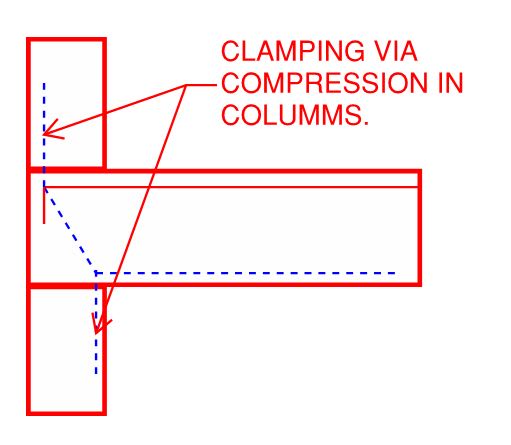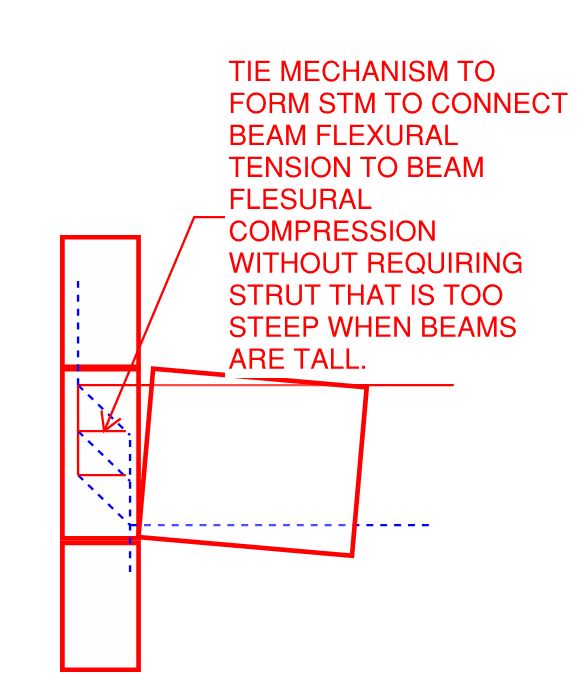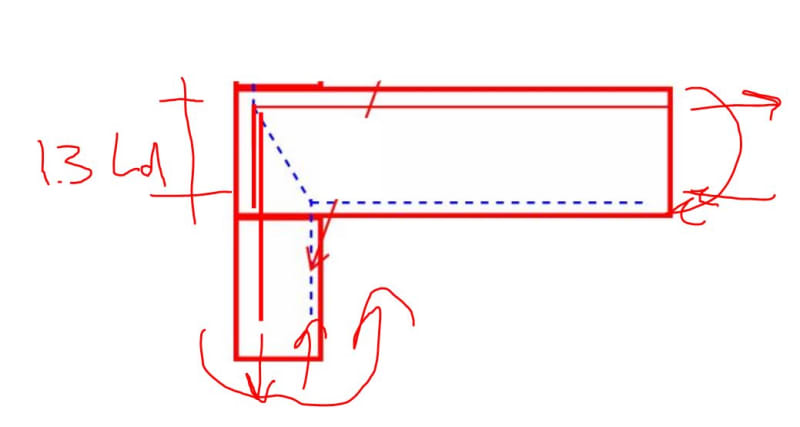abusementpark
Structural
- Dec 23, 2007
- 1,086
I am using RAM Concrete to design two stories of conventionally reinforced concrete beam and column frames. The beams are 2'-0" deep and range in width from 2'-0" to 3'-10". For the analysis in RAM Concrete, we are considering almost everything fixed at the joints, as this seems most realistic and allowing the columns to take some moment really helps with the beams design and distribution of load. RAM Concrete is showing some pretty significant moment transfer occurring between the beams and the columns, especially at the top floor where there is a lot of load. Can anyone provide some guidance for the primary design and detailing checks that should be done to ensure this transfer can occur at various conditions? I should note that this is a low seismic zone (SDC B) and the beam and columns are not part of the LFRS (we have shear walls for that).
For the beam over column condition at the upper floor, I know I need to hook the column bars and check their development length into the beam. Do column ties need to continue into the beam? Similarly, I assume beam bears need to be hooked and developed at any end joint where a beam terminates?
For the beam over column condition at the upper floor, I know I need to hook the column bars and check their development length into the beam. Do column ties need to continue into the beam? Similarly, I assume beam bears need to be hooked and developed at any end joint where a beam terminates?




